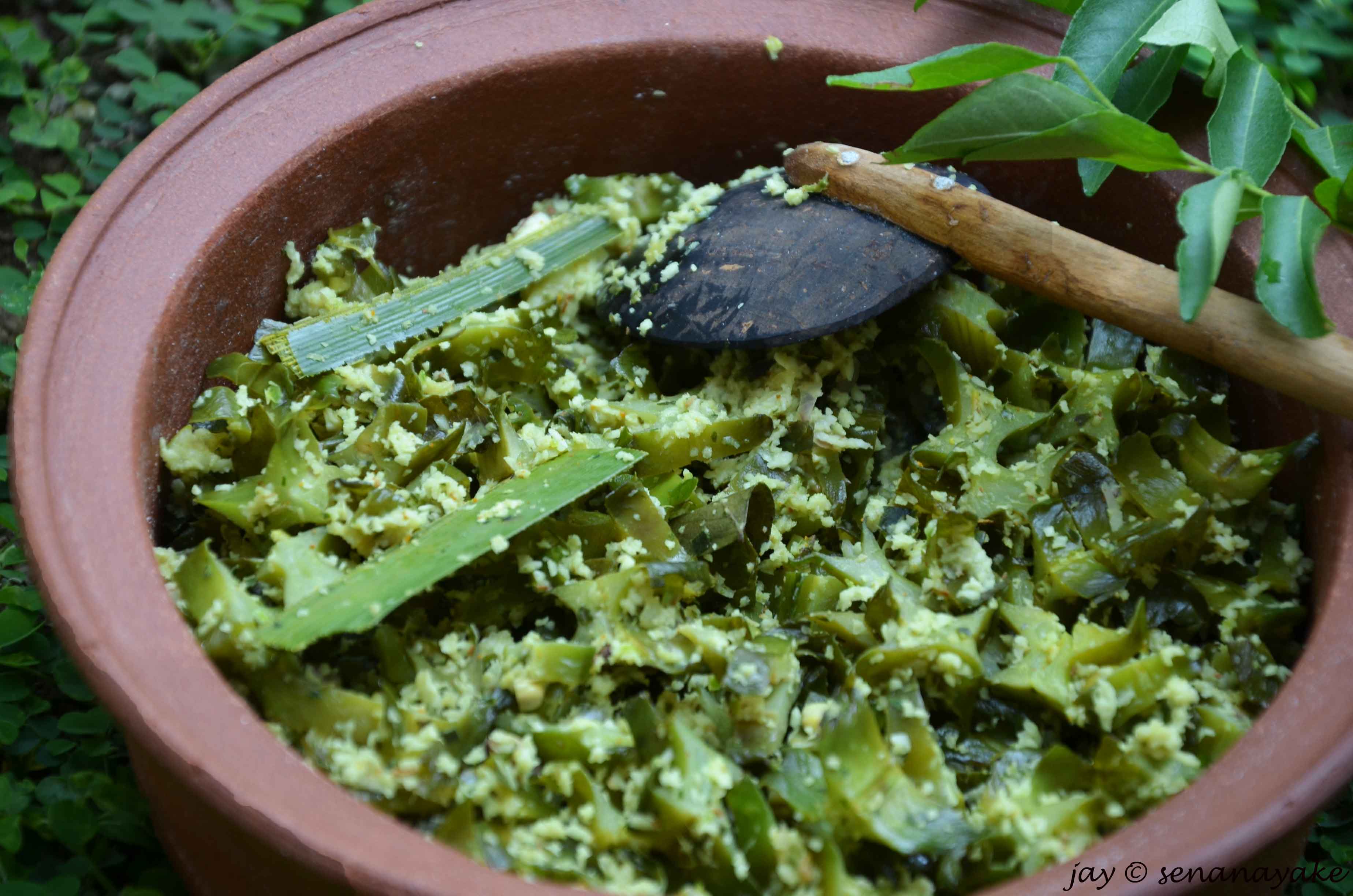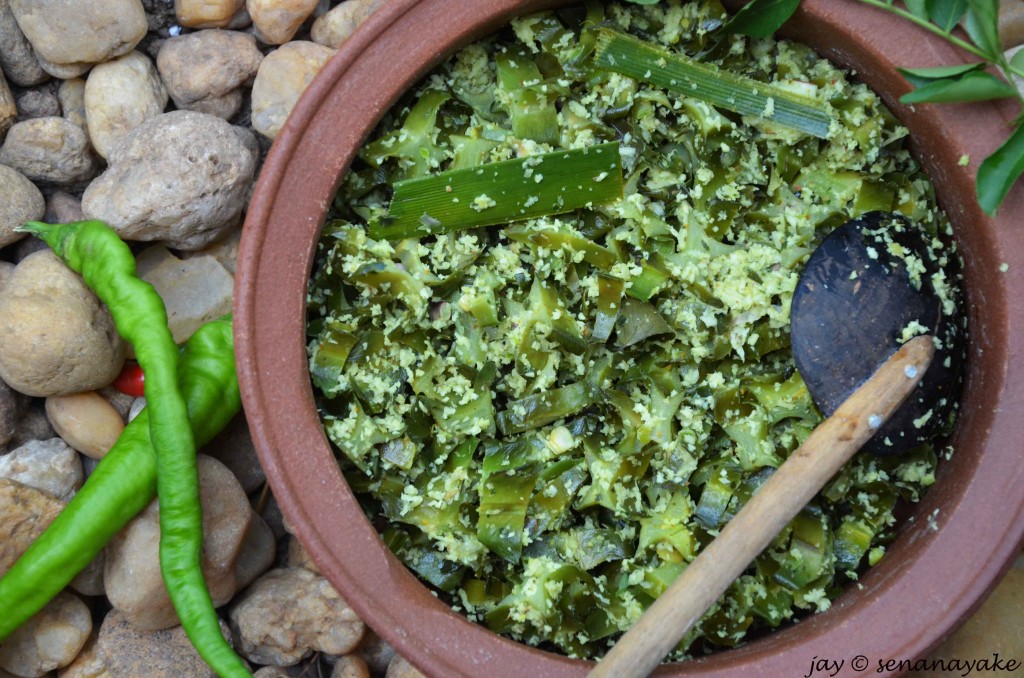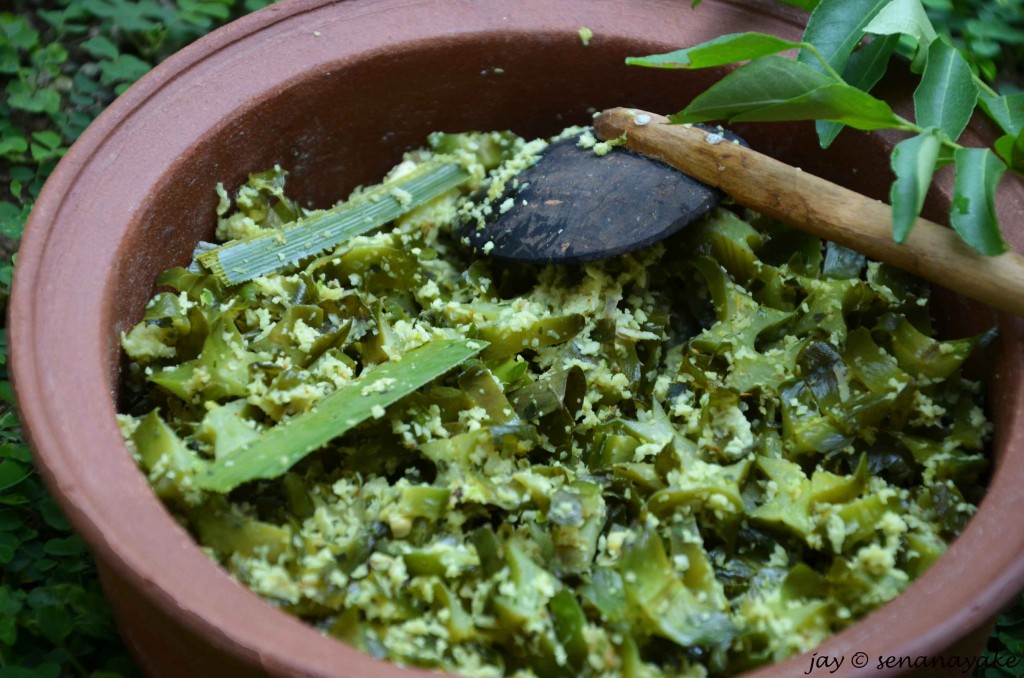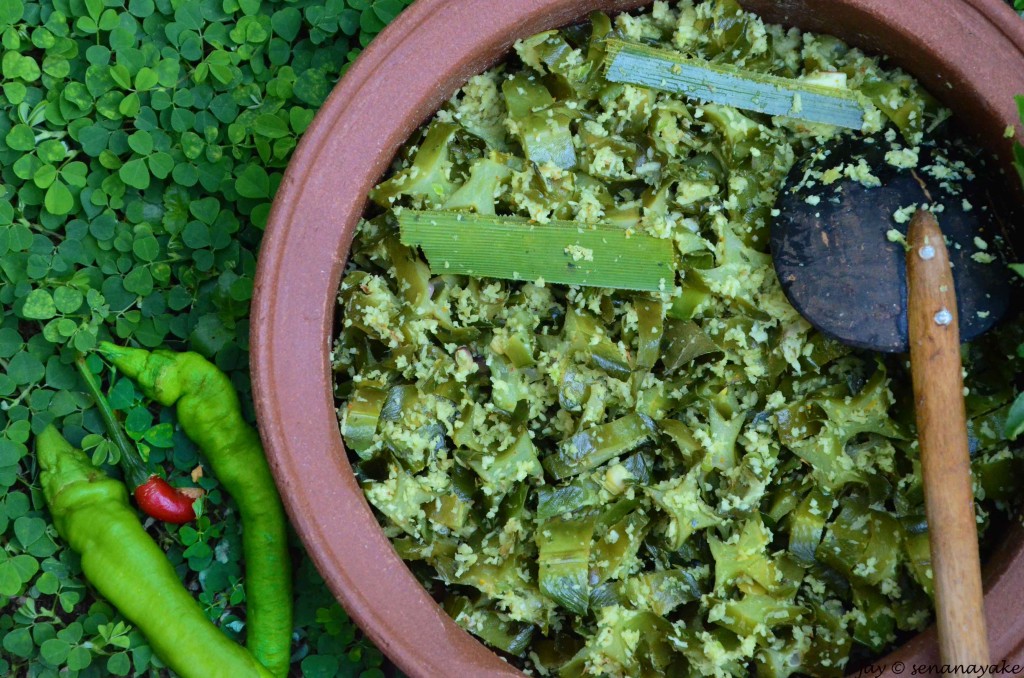As a child, I detested winged beans.
As a working woman, my mother did not often have the time to both cook and look after us all the time, so it was our domestics who did the cooking during the week days. I hated the way they prepared the dish, soggy and overcooked with a certain bitterness to it that simply would not go away. Whenever there was dambala for lunch or dinner, there was always a tantrum and I would end up crying not wanting to eat anything that touched the detested curry. And then my mother one day made this. My life was changed.
Now the common method of preparing winged bean is what is known as “dambala thel dala” (tempered winged bean) which entails a whole lot of oil and tempering those beautiful green beans until they lose all their colour. The outcome is dull, soggy and quite lifeless. My mother’s dambala mallum is worlds away from this little terror in a vessel. It is fresh, it is crunchy and absolutely delicious. In the absence of mother, my mother-in-law (who is proving to be quite the sidekick it seems) helped make this dish.
Winged bean. We Sri Lankans know it as Dambala.
This green, tender vegetable that grows on vines is a delicacy that not enough sung about. Known by the scientific name Psophocarpus tetragonolobus, the winged bean usually hangs down from a climber belonging to the fabaceae family and is closely related to the pole beans.
Known to be one of the lowest calorie vegetables carrying only 49 calories per 100g, the winged bean contains a very high protein content similar to that of the soybean.
The tender young winged bean is the most delicious. Not only is it high in flavour, 100 g of such beans provide 66g (16.5%) of daily requirement of folates, 18.3 mg (31%) of vitamin C and is also endowed with abundant minerals such as copper, iron, calcium, manganese, magnesium and phosphorus. However, the more mature winged bean is said to contain a higher concentration of protein but when it comes to cooking with them, the mature beans are not the first choice as these tend to be somewhat tough and sinewy.
An excellent source of fiber, vitamin C, vitamin A and minerals, winged bean also contains a significant amount of Thiamin, pyridoxine (vitamin B-6), niacin, and riboflavin. All in all, this unassuming green vegetable is a healthy eater’s dream come true. I for one, am completely in love with it.
Dambala is available all year around in Sri Lanka as it is with many tropical countries such as Malaysia and Indonesia. From an organic angle, this is perhaps the safest to consume as no fertilizers or pesticides are used in this cultivation as they grow so easy and there is practically no need to use artificial means to make them grow.
The pods, the leaves, shoots and flowers, basically every part of the plant is used in Sri Lankan cuisine but my favourite would be the tender, fleshy pods picked fresh from the vine. Growing best under hot humid weather, the plant thrives in Sri Lanka and grows to about 5 metres tall. The fruit, or rather the pods are four angled, elongated with frilly edges that are somewhat wing shaped because of which it wins its name.
But my favourite are the crunchy fresh pods.
Winged bean mallum
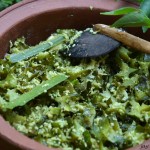
Ingredients
- Winged beans - 250g Young, Tender
- Shallots - 50g
- Coconut - 100g, grated
- Green chilies - 2-3
- Curry leaves - 6 sprigs
- Garlic - 8 cloves, crushed
- Ginger - 10g crushed
- Turmeric Powder - 1tsp
- Chili powder - 1tsp
- Mustard seeds - 1tsp
- Pandan leaves - 2 pieces
- Salt - To taste
Instructions
To clean the dambala
- Pinch either side of the elongated pod and break. The top should come off attached to a sort of string, peel it off. Do this to both sides, peeling off the string-like attachment.
- Wash and cut the dambala. Cut it width wise in 3mm pieces. Set aside.
Method
- Grind together (you can do this in a mortar and pestle or a grinder) the shallots, coconut, green chili, half the curry leaves, garlic, the ginger and a bit of salt.
- Heat oil in a pan on high flame. Add to this the mustard seeds, rest of the curry leaves, pandan leaves and sauté till they begin to pop.
- Add to this the winged beans, turmeric, chili powder and salt. Sautee for about 5 minutes. Lower the flame and simmer while covered with a lid.
- Uncover after 5 minutes and add the coconut mixture and mix well. Sautee on high heat for 5 minutes. Cover and simmer on low heat for 5 minutes. Take off heat and serve while warm.
Crunchy, fresh and oh-so-delicious! All you’d want is a dhal curry and you’d gobble down a whole pot of rice with this!
Pieces of winged bean would yield with a crunch and each piece would burst forth with a sea of flavours quite unlike anything you’ve tasted before. The coconut gives the dish a lovely creamy flavour while also acting as a sponge to soak up all that flavour. The little bits of coconut touched by fire alongside onions, green chili, curry leaves and garlic lend the dish a delicious toasted flavour needled through with a hint of spice reminiscent of golden sunny afternoons.
The mustard seeds popping in your mouth is sure to bring a smile to your face. The ginger warms the entire dish with its voluptuous heat, balmy and sensual but does not overpower, bringing out with it, the full glory of the winged beans. The shallots are young and bubbly amongst the winged beans, caressing the green depths with mild heat while the chili and the turmeric enhance, uplift and give the palate something to remember.
Did I mention that this is so healthy that it hurts? This is a pretty legit “super food”.
Healthy food that taste good too do exist. It’s all in how you make it, as my mother says. And if you too have a little one who (or if you yourself are) absolutely abhorrent of this dish, try making it this way. Worked on me when I was small. Can’t doubt that it won’t work again.
Cooking tips
- When choosing winged beans. Try snapping off one corner of the pod with your finger. If it snaps with a delicious crack it is of ideal tenderness. If it bends instead of breaking, that means it has matured and will be tough and sinewy. Always go for the tender young ones.
- There are two types of winged beans.
- When cleaning winged beans, break off one corner of the winged bean and pull it down towards the pod in a stripping down motion. Do this with both the ends.

